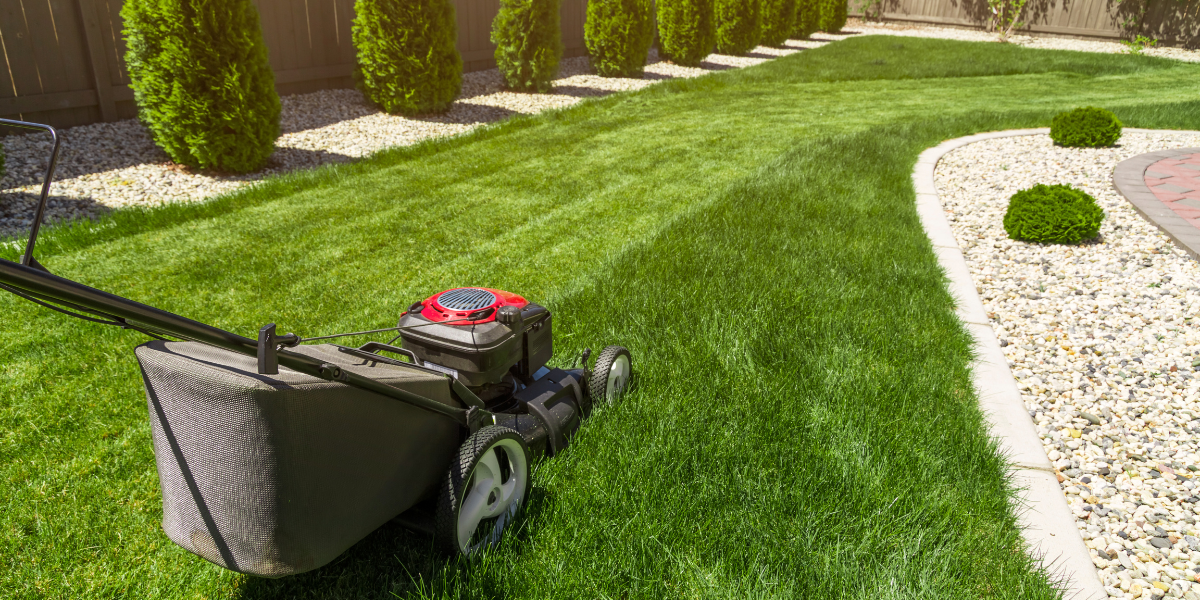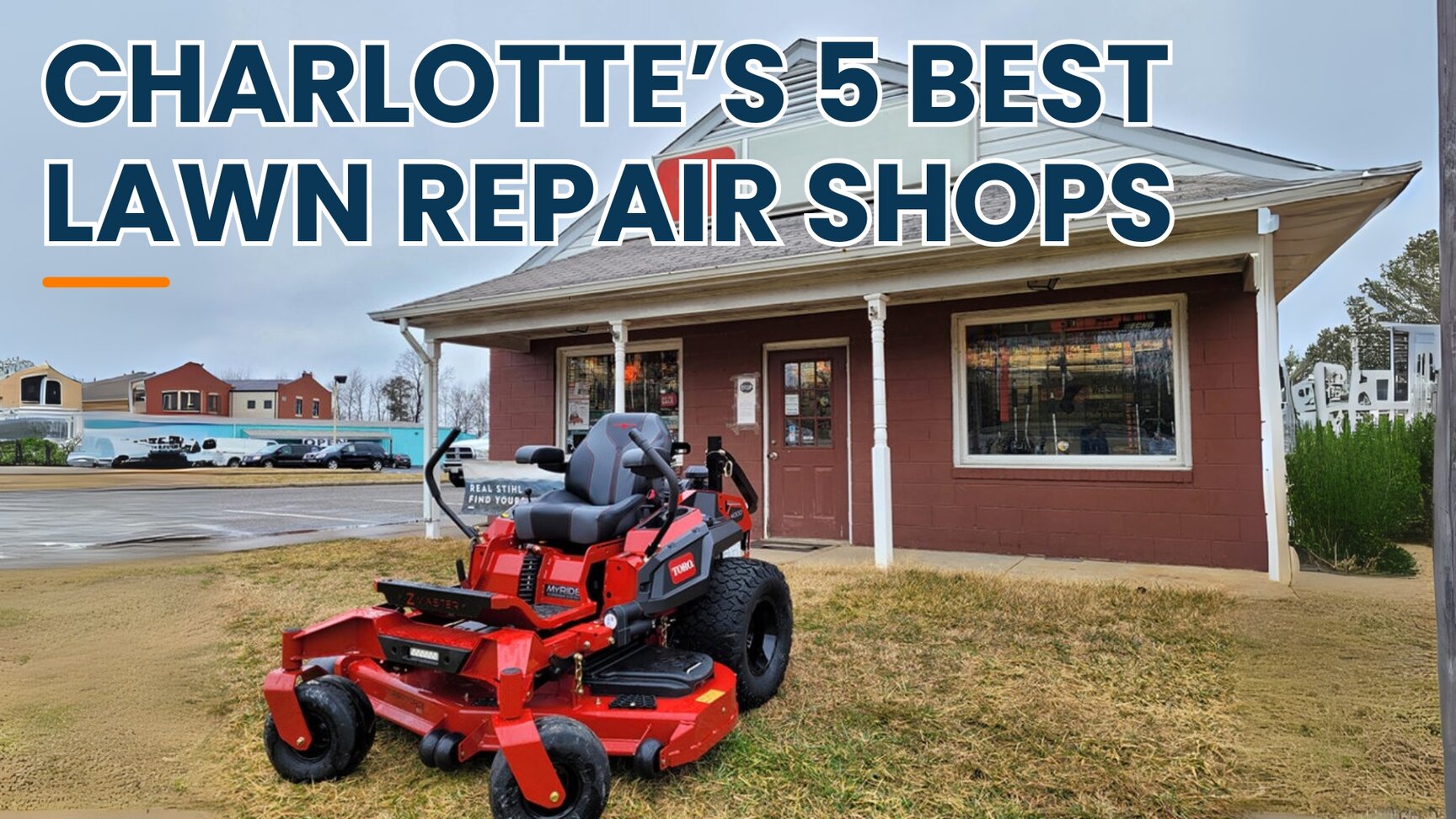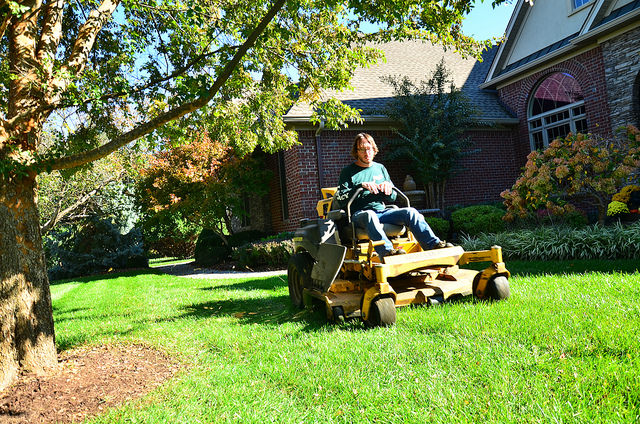 What’s the Most Popular Day to Get Your Lawn Mowed? We Looked at 100 Cities to Find Out
What’s the Most Popular Day to Get Your Lawn Mowed? We Looked at 100 Cities to Find Out
Fall Lawn Care: What to Do Before Winter (2026 Guide)
by Gene Caballero | December 13, 2025
Fall Lawn Care: What to Do Before Winter (2026 Guide)
Fall is the most important season for your lawn. While spring gets most of the attention, what you do between September and November determines how well your grass survives winter and how quickly it bounces back next year.
Whether you're handling fall maintenance yourself or working with a local pro through GreenPal, understanding what your lawn actually needs this season will help you make smarter decisions and avoid wasted effort.
For cool-season grasses like Kentucky bluegrass and tall fescue, fall is prime time for fertilization, aeration, and overseeding. For warm-season grasses like bermudagrass and zoysia, fall is about preparing for dormancy without triggering vulnerable new growth. This guide breaks down exactly what your lawn needs this fall based on your grass type, with specific timing and application rates.
Why Fall Lawn Care Matters More Than Spring
Most homeowners focus their lawn care energy on spring. But agronomic research points to fall as the season that actually sets your lawn up for success.
Here's what's happening biologically: as air temperatures drop into the 60-75°F range, cool-season grasses hit their photosynthetic sweet spot. The plant produces more energy than it needs for leaf growth. That surplus gets sent down to the roots and crown, where it's stored as carbohydrates for winter survival and spring green-up.
Ohio State University research found that proper fall fertilization allows turf to green up 2 to 6 weeks earlier in spring without needing early spring fertilizer applications. This avoids the problematic "spring surge" that depletes root reserves and creates excessive mowing demands.
Another key factor: roots keep growing long after shoots stop. While your grass may look dormant on top, root growth continues until soil temperatures approach freezing (32°F). This extended window is why fall aeration and fertilization are so effective.
Fall Lawn Care for Cool-Season Grasses
If you have Kentucky bluegrass, tall fescue, fine fescue, or perennial ryegrass, fall is your lawn's growing season. These grasses thrive in cooler temperatures and struggle through summer heat.
Fall Fertilization: The Two-Phase Approach
Fall fertilization for cool-season turf works best in two phases with different goals.
Early Fall (September)
The objective here is recovery and stimulation. Apply 0.5 to 1.0 lb of nitrogen per 1,000 square feet. This rate helps your lawn recover from summer stress by producing new tillers (shoots) and rebuilding density. A mix of slow-release and quick-release nitrogen works well during this phase.
Late Fall (October/November)
This is the "winterizer" application, and timing matters. Apply when vertical shoot growth has stopped (air temps consistently below 50°F) but the grass is still green. For most regions, this falls after your last mowing of the year.
Apply 1.0 to 1.25 lbs of nitrogen per 1,000 square feet using a quick-release source like urea. Because it's too cold for leaf growth, the plant stores this nitrogen in the crown as amino acids and enzymes rather than pushing new leaves.
One caution: applying heavy nitrogen too early (while shoots are still actively growing) produces tender tissue that's highly susceptible to snow mold fungi.
Core Aeration: Fall Is the Window
Soil compaction reduces the pore space your grass roots need for oxygen, water, and nutrient uptake. Core aeration addresses this by physically removing plugs of soil.
Fall is the optimal time to aerate cool-season lawns. The combination of warm soil and cool air stimulates aggressive root growth into the channels created by the aerator. Iowa State University research indicates that core aeration can improve long-term turf performance by up to 15% compared to spike aeration.
A note on spike aeration: while convenient, it doesn't relieve compaction. In clay soils, solid tines actually compress soil laterally around the hole. Reserve spike aeration for sandy soils or light maintenance between core aeration years.
Overseeding: Soil Temperature Is Everything
Fall provides the ideal conditions for germinating cool-season grass seed. The soil holds summer heat (speeding germination) while cooler air reduces evaporation and weed competition.
Seed when soil temperatures are in the 60s°F. Once soil drops below 50°F, germination rates drop significantly.
Seeding Rates by Grass Type
Grass Species |
New Lawn Rate (per 1,000 sq ft) |
Overseeding Rate (per 1,000 sq ft) |
Germination Time |
Tall Fescue |
6-10 lbs |
4-6 lbs |
7-12 days |
Kentucky Bluegrass |
2-3 lbs |
1-2 lbs |
14-21 days |
Perennial Ryegrass |
4-8 lbs |
3-5 lbs |
5-10 days |
Fine Fescues |
4-5 lbs |
3-4 lbs |
7-14 days |
Tall fescue doesn't spread via rhizomes (except newer RTF varieties), so it requires higher seeding rates to achieve density. Kentucky bluegrass germinates slowly but spreads and self-repairs over time.
For best results, aerate before overseeding. This ensures seed-to-soil contact and gives new roots open channels to establish.
Fall Lawn Care for Warm-Season Grasses
If you have bermudagrass, zoysiagrass, St. Augustinegrass, or centipedegrass, fall lawn care is fundamentally different. These grasses are entering dormancy, not peak growth.
The Nitrogen Cutoff Rule
This is critical: stop nitrogen applications 6 to 8 weeks before your region's average first frost date. For most transition zone areas, this means no nitrogen after early September.
Late nitrogen on warm-season grass forces new growth that can't harden off before frost. This tender tissue lacks the cell wall structure to survive freezing temperatures. The result is winter kill and depleted carbohydrate reserves.
Potassium for Winter Hardiness
While nitrogen is restricted, potassium becomes important for warm-season grasses in fall. Potassium regulates cellular water content and acts as a natural antifreeze by lowering the freezing point of cell sap.
NC State Extension recommends low-nitrogen, high-potassium fertilizers (ratios like 5-0-20) for warm-season fall applications. However, this only helps if your soil is actually deficient in potassium. A soil test confirms whether the application is worthwhile.
Nutrient Strategy Comparison
Nutrient |
Cool-Season Fall Strategy |
Warm-Season Fall Strategy |
Nitrogen |
High: 1.0-1.5 lbs/1,000 sq ft total |
Low/None: Cease by early September |
Potassium |
Moderate: Based on soil test |
High: Critical for winter hardiness |
Phosphorus |
Only if overseeding or soil deficient |
Generally not required |
Fall Weed Control
Targeting weeds in fall is more effective than waiting until spring. The timing aligns with plant biology.
Why Fall Herbicides Work Better
Winter annual weeds like henbit, chickweed, and annual bluegrass germinate in fall as temperatures drop. They establish small rosettes, overwinter, then explode with growth and seed production in early spring. By the time you see flowers in spring, the plants are hardened and difficult to kill.
For perennial weeds like dandelions and clover, fall is also the optimal treatment window. In autumn, plants transport carbohydrates from leaves down to roots for winter storage. Systemic herbicides applied at this time travel with this downward flow, delivering a complete root kill.
Research indicates that fall herbicide applications provide over 90% control of winter annuals, significantly outperforming spring treatments.
Apply post-emergent herbicides when temperatures are above 50°F and plants are actively growing. Efficacy drops when it's too cold for absorption and translocation.
One limitation: if you're overseeding, you can't use pre-emergent herbicides. They prevent all seed germination, including your grass seed.
What to Do with Fall Leaves
Traditional advice says to rake and remove all leaves. Research suggests otherwise.
The Case for Mulching
Michigan State University studies found that mulching leaves into established turf for six consecutive years had no negative effect on turf quality, color, or growth. The decomposition process eventually returns nutrients to the soil.
The numbers are meaningful. Mulching a 2-inch layer of leaves contributes approximately 0.5 to 1.0 lb of nitrogen per 1,000 square feet over time, plus phosphorus and potassium. It's essentially free slow-release fertilizer.
An unexpected finding from the same research: mulched maple leaves reduced dandelion populations in Kentucky bluegrass lawns. The leaf litter creates a physical barrier and may release compounds that inhibit weed germination.
The key is shredding leaves to dime-sized pieces so they settle between grass blades rather than smothering the canopy. If leaves still cover more than 20% of the grass surface after mowing, remove the excess.
Watering Your Lawn in Fall
A common mistake is shutting off irrigation too early. Even when top growth stops, roots remain active and cellular hydration is critical for cold tolerance.
Dehydrated crowns are more susceptible to winter kill. In open winters with low snow cover, sublimation (ice turning directly to vapor) draws moisture from plant crowns. If the soil is dry, roots can't replace this moisture.
Continue watering until the ground freezes. Your lawn and any trees continue losing water through transpiration until fully dormant.
If you have an irrigation system, winterize it before the frost line reaches pipe depth. But you can still hand water or use hoses for the turf surface as long as water penetrates the soil.
Final Mowing Before Winter
Keep mowing until growth completely stops. The goal is to avoid leaving grass long enough to mat down under snow or moisture.
For your final cut, lower the mowing height slightly (around 2 inches for most lawns). Long grass creates a mat that traps moisture and insulates fungal pathogens, increasing snow mold risk in northern climates.
This is one of those tasks that's easy to let slide as the season winds down. But it makes a real difference for spring appearance.
When Professional Help Makes Sense
Some fall lawn care tasks are straightforward for homeowners. Fertilizing and mulching leaves don't require special equipment or expertise.
Other tasks are more involved. Core aeration requires a heavy machine most homeowners don't own. Timing fall applications correctly depends on monitoring soil temperatures and understanding your specific grass type. Diagnosing whether your lawn needs overseeding, herbicide treatment, or both takes some experience.
Through GreenPal, you can get quotes from local lawn care professionals who handle fall maintenance. The platform connects you with vetted providers in your area who can assess what your lawn actually needs rather than applying a one-size-fits-all approach. You'll receive up to five competitive bids within minutes, compare reviews and pricing, and only pay after the work is completed with photo confirmation.
Whether you handle fall lawn care yourself or bring in help, the key is acting during this window. What happens between now and the first hard freeze determines your lawn's condition next spring.















